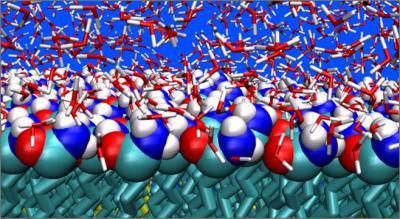EU directive regulates maximum heavy metal limits for incineration plat wastewater
Advertisement
A new EU directive, which seeks to decrease the amount of heavy metals in wastewater from incineration plants, is currently being transformed into national legislation across Europe. Degussa’s TMT 15 – an environmentally safe, non-hazardous product – can help maintain these new limits. According to EU Directive 2000/76/EC, wastewater from incineration plants may contain no more than 0.03 mg/l mercury and no more than 0.05 mg/l cadmium. Degussa AG’s business unit Bleaching & water Chemicals, Düsseldorf, offers TMT 15 as a solution package, including consultation on technical application. This solution can help maintain many of the new lower maximum limits.
Wastewater from new incineration plants for household or special waste as well as coal-fired power plants will have to meet the more stringent guidelines by the end of 2002. The directive requires existing plants to meet the new standards by the end of 2005. TMT 15, which is odorless, is fed into the wastewater stream, where it reacts with the heavy metals to form a precipitate that can then be separated off and taken, for instance, to a waste disposal site. “TMT 15 has proven itself in several hundred incineration plants around the world for the removal of heavy metals – especially mercury and cadmium – from wastewater,” says Dr. Martin Bauer, business manager for the Bleaching & Water Chemicals Business Unit. He attributes this to the high degree of safe handling allowed by the product. TMT 15 is odorless, environmentally safe, non-toxic and non-hazardous. TMT 15 can also be used to remove mercury from the flue gases of incineration plants without the need for costly retrofitting.
In addition to chemicals for water and wastewater handling, the business unit also produces environmentally safe bleaching and oxidizing agents like hydrogen peroxide, auxiliary agents for the paper industry, and cyanide for the mining industry. The business unit achieved sales of €567 million in 2000 and employs some 1,700 people.
Topics
Organizations
Other news from the department research and development

Get the chemical industry in your inbox
By submitting this form you agree that LUMITOS AG will send you the newsletter(s) selected above by email. Your data will not be passed on to third parties. Your data will be stored and processed in accordance with our data protection regulations. LUMITOS may contact you by email for the purpose of advertising or market and opinion surveys. You can revoke your consent at any time without giving reasons to LUMITOS AG, Ernst-Augustin-Str. 2, 12489 Berlin, Germany or by e-mail at revoke@lumitos.com with effect for the future. In addition, each email contains a link to unsubscribe from the corresponding newsletter.





















































